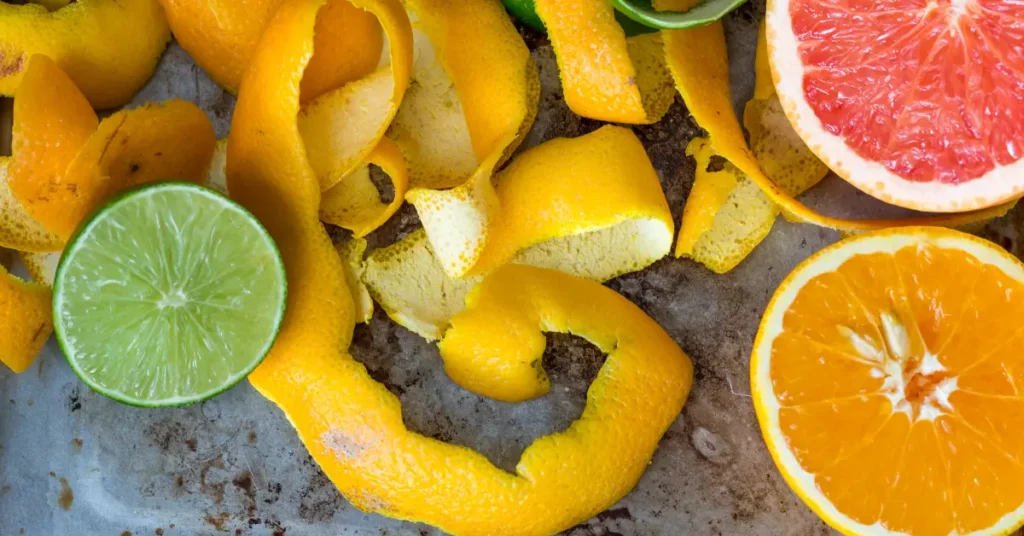
Table of Contents
In an age that is that is increasingly focusing on wellbeing and health the search for the nutritional benefits of food has taken on a greater importance. A common source that is often ignored is the peels from fruits and veggies. Consuming peels could seem strange to a few yet recent research and developments in the field of health indicate otherwise. In this article, we delve into the concept of eating peels, specifically through the lens of wellhealthorganic.com:eat your peels: unlocking the nutritional benefits, and uncover the myriad benefits that lie beneath the often discarded outer layers of our produce.
Wellhealthorganic.com:eat your peels: unlocking the nutritional benefits: An Overview
For veggies and fruits it is the peel that’s often the most nutritious part. Peels are a rich source of vitamin C, fiber, minerals as well as antioxidants. They play an important role in preserving the fruit and encouraging its growth. This implies that they’re naturally enriched with beneficial compounds for our health. The focus of wellhealthorganic.com:eat your peels: unlocking the nutritional benefits is to highlight these hidden treasures and encourage a shift in how we perceive and consume our produce.
Nutritional Powerhouses: The Benefits of Eating Peels
Fiber-Rich Peels
One of the main advantages of eating peels is their fiber material. The consumption of fiber in diets is crucial for digestion, helping with regular bowel movements as well as stopping constipation. Additionally, fiber helps to maintain the weight of a healthy person by creating feelings of fullness which may reduce overall calories consumption.
In addition, the increased intake of fiber from peels may also help regulate blood sugar levels, which is beneficial to those who suffer from diabetes or are who are at risk of developing. Furthermore, fiber plays a function in maintaining an optimal gut microbiome through encouraging the development of beneficial bacteria which improves the overall health of your digestive system and decrease the likelihood of developing digestive disorders.
Vitamins and Minerals
Peels are rich in vital minerals and vitamins. In particular, apple skins contain Vitamin C and potassium as well as vitamin A. The skins of potatoes contain a significant amount of calcium, iron, potassium, as well as vitamin B6. If we throw away the peels you could be missing important minerals. Additionally the minerals and vitamins have a vital role in keeping various bodily functions in check, including supporting immunity as well as enhancing bone density as well as maintaining well-maintained skin.
As an example, vitamin C in many skin peels acts as an antioxidant with potent properties that help shield cells from injury and promotes collagen production to ensure healthy skin and increases the ability of your immune system to combat infections.
Antioxidant Properties
Antioxidants are substances which benefit to protect your body from stress resulting in oxidative inflammation that can result in chronic conditions like cancer or heart illness. The peels of many fruits and vegetables contain antioxidants. The peel of an orange has higher amounts of flavonoids and vitamin C as compared to flesh of the fruit. The antioxidants neutralize free radicals and reduce the chance of damage to cells as well as promoting general well-being. Furthermore, antioxidants play a part in reducing the ageing process, protecting tissue and cells from injury and aging, thereby maintaining good skin health and decreasing the danger of developing diseases related to age.
Health Benefits Supported by Research
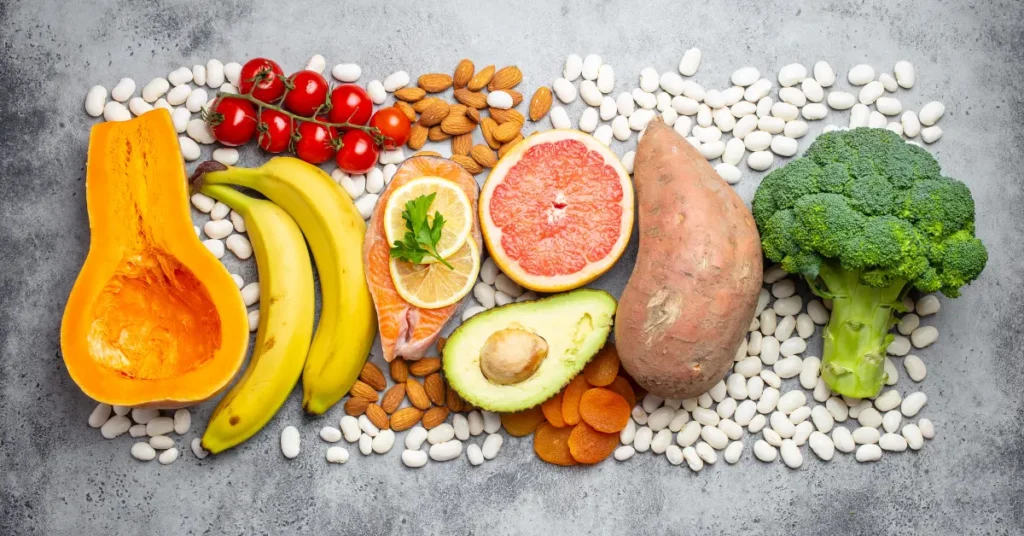
Many studies have highlighted the benefits to nutrition of eating apple peels. Research has revealed that the skin of an apple has at least six times the amount of antioxidants than the flesh. Additionally, the potato’s skins were identified to be rich in amounts of fiber and potassium and are crucial to cardiovascular health. These payoff highlight the health benefits that could be gained by incorporating potato the peels of potatoes in our food.
In addition, studies have shown that consumption of these fruits may benefit in reducing the chance of developing chronic illnesses including cardiovascular diseases type 2 diabetes and some cancers due because of their large material of bioactive chemicals that have anti-inflammatory as well as anti-carcinogenic qualities.
Specific Peels and Their Benefits
Apple Peels
Apple peels prepare a great illustration of the reason we should take a look at eating the entire fruit. They’re loaded with fibre, vitamin C and quercetin, which is a potent antioxidant. Quercetin is linked with lower the risk of heart diseases, improving lung function and also having anti-inflammatory qualities. Furthermore, the fiber found from apple peels could assist in weight control as it promotes a sense of fullness, and also reducing consumption of calories. The peels of apples also have the acid ursolic, which has been found to improve muscular strength and muscle mass and reduce the accumulation of fat and rise metabolic rate of glucose. This makes it beneficial to those suffering from metabolic issues.
Citrus Peels
Peels of citrus, such as lemon, orange and lime, are commonly employed in their zest forms for flavoring food items, however their advantages extend beyond the flavor. Peels of citrus contain greater amounts of vitamins C and A as well as fiber and antioxidants when compared with the flesh of the fruit. The nutrients boost the immune system, boost the health of your skin, as well as boost digestion. They also have in them limonene, which is a chemical with potential anti-cancer properties.
Furthermore, the citrus peels were found to contain antimicrobial qualities, which could benefit to stop the development of fungi and harmful bacteria which is beneficial to maintaining the health of your food as well as overall wellbeing.
Potato Skins
The potato’s skin contains a wealth of nutrients like iron, potassium and vitamin B6. Skins of potato also contain chlorogenic acid, a powerful antioxidant which can benefit reduce blood pressure. The skins left on while cooking potatoes will increase the nutrients of your food. Furthermore, the fiber content inside potato skins assists in digestion, and can benefit maintain the health of your microbiome in your gut. The skins of potatoes also have resistant starch. It functions as a prebiotic and aids in the development of beneficial gut bacteria as well as improving the gut’s health. The resistant starch may also benefit boost the sensitivity of insulin and control the blood sugar level.
Banana Peels
Although they are not as popular and less common in Western diets, peels of a banana are delicious and full of nutrients. They’re high in potassium, fiber from diet as well as antioxidants such as the lutein. Peels of bananas are used in smoothies and cooked to enhance their taste. In addition, the peels of bananas have been discovered to be rich in chemicals that benefit rise mood as well as reduce anxiety, due to the tryptophan content which acts as an ingredient that is precursor to serotonin.
The peels of bananas are also antifungal as well as antibiotic properties that may benefit to fight diseases and improve general well-being. The peels can be utilized in many dishes such as stir-fries that are savory to sweet desserts, providing nutrients and flavor.
Carrot Peels
Carrot peels provide another instance of a food item that is commonly ignored which is a source of nutritional value. They have a significant amount of beta-carotene and fiber as well as and antioxidants. Incorporating carrots into your diet could benefit improve the health of your eyes as well as rise the immune system. Beta-carotene found in carrots transforms into vitamin A within the body. Vitamin A is vital for good skin and vision.
Furthermore, the carrot peels are a source of polyacetylenes. These are substances that have been proven to have anti-inflammatory and anti-cancer properties. This makes an excellent supplement to a balanced diet. Peels of carrots are used as a component in stews, soups as well as baked items for a boost in their nutritional content.
Mango Peels
Mango peels contain carotenoids, polyphenols and omega-3 and omega-6 fat acids. These substances have anti-inflammatory and antioxidant qualities. Mango peels are also a source of mangiferin, which is a bioactive substance which has been associated with lower cholesterol levels as well as protecting against various cancers. In addition, mango peels are believed to have anti-diabetic effects, which can help control blood sugar levels and rise the sensitivity of insulin. Mango peels can be found as a salad dressing, smoothie or even for a sweetener that is natural to many dishes. They add the taste as well as the health advantages.
Kiwi Peels
The peels of the kiwi fruit are delicious and very nutritious. They are loaded with higher levels of fiber, vitamin C and antioxidants than flesh. Peels also have antibacterial and antifungal qualities that can improve the overall well-being. The consumption of the peel could boost its nutrient profile and make it an even better supplement to your daily diet. The peels of Kiwi are also abundant in flavonoids. These are compounds found to possess anti-inflammatory and anti-cancer properties. Raw kiwi peels are delicious as well as blended into smoothies or as a topping on salads and yogurt giving a distinctive flavor as well as more health advantages.
How To Incorporate Peels in Your Diet
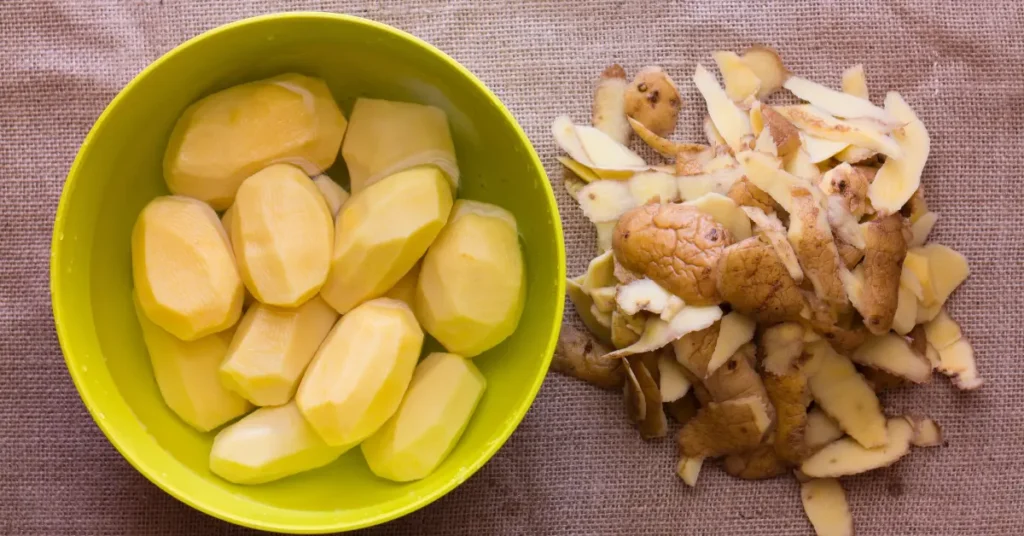
Washing and Preparing Peels
In order to eat peels safely, it is crucial to wash them well to get rid of all dirt, bacteria or residual pesticides. Utilizing a vegetable brush could benefit warrant that they’re clean. Organically grown produce is suggested as it’s less likely have dangerous pesticides. In addition, soaking fruit and vegetables in a solution of vinegar and water for a short time can benefit get rid of surface contaminants. This process is vital in order to assure that the fruits and vegetables can be eaten safely and maximize the nutrients. A proper washing process and preparation will improve the taste and texture of the peels which makes them much more pleasant to eat.
wellhealthorganic.com:eat your peels: unlocking the nutritional benefits cooking using Peels
There are many ways to include peels in your diet.
- Smoothies: The addition of peels in smoothies is an easy method to increase nutrition material but without altering taste substantially. In this case, for example, you could mix the peels of bananas, apple peels, as well as citrus zest in your breakfast smoothies for the added benefit of vitamin C and fiber.
- Baking: Add peels to baked items like muffins and breads to add fiber and nutrition. Peels of zucchini or carrot that are grated are great to add to baked goods and breads to give them an extra boost in nutrition.
- Snacks: Create chips from the peels of apples or potatoes by baking them in some olive oil and a pinch of salt. This makes for a tasty and nutritious snack that is loved by everyone of any age.
- Zesting: Utilize citrus peels to add zest to your meals to add flavor and nutrition. Lime or lemon zests adds flavor to sauces, desserts, and marinades. sauces.
- Soups and Stews: Add the peels to stews and soups for extra nutrition and flavor. Peels of potatoes, for example could be added to stews or soups of vegetable for a boost in fibre material.
Recipes Highlighting Peels
wellhealthorganic.com:eat your peels: unlocking the nutritional benefits Apple Peel Chips
Ingredients:
– Apple peels
– Olive oil
– Cinnamon
– Sugar (optional)
Instructions:
1. Preheat your oven to 200 degrees F (93degC).
2. In a bowl, mix the apple peels together with some cinnamon, olive oil and, if you wish, sugar.
3. The peels should be spread one-by-one on the baking sheet.
4. Bake for around 2 hours, flipping them every now and then until the cookies are crisp.
Citrus Peel Marmalade
Ingredients:
– Citrus peels (orange, lemon, lime)
– Water
– Sugar
Instructions:
1. Cut off the peels of citrus into small strips.
2. Cook the peels in boiling some water for approximately 10 minutes. Then, drain.
3. Continue boiling to lessen the bitterness.
4. In a pan, mix the peels and equal amounts of sugar and water.
5. The mixture simmers until it thickens and becomes marmalade-like.
6. Make jars of it and enjoy in toasts or to serve as a topping for desserts.
Potato Peel Chips
Ingredients:
– Potato peels
– Olive oil
– Salt
– Pepper
– Paprika (optional)
Instructions:
1. Preheat the oven to 400°F (200degC).
2. Mix the potato peels in oil from olives, salt pepper, and paprika.
3. Place the peels on baking sheets on a single sheet.
4. Bake for 15 to 20 minutes or until crispy rotating halfway through.
Banana Peel Smoothie
Ingredients:
– 1 banana peel
1 Banana
1-cup almond milk (or any other milk that you prefer)
1 teaspoon honey
1 teaspoon of cinnamon
Instructions:
1. Clean the banana peel well then chop it into tiny pieces.
2. Blend the banana peel, the almond milk, banana as well as honey and cinnamon until it is smooth.
3. Pour the drink into a glass, and then sip.
wellhealthorganic.com:eat your peels: unlocking the nutritional benefits Health Considerations and Precautions

Peels can provide many advantages for health However, there are a few points to take into consideration. Produce that is not organic may contain residuals of pesticides on your skin. It is essential to thoroughly wash the peels or choose organic ones. Furthermore, certain peels can be difficult and hard to digest for certain people. Incorporating peels slowly into diet could benefit your digestive system to adapt. It is also essential to stay conscious of any digestive issues and allergic reaction that could occur when eating peels at first.
Allergies and Sensitivities
It is crucial to know about the possible sensitivities or allergies which you might have with certain peels. There are people who have allergic reactions to substances found in specific fruits and vegetables. If you’ve had allergies in the past you should talk to a health competent prior to adding peels to your daily diet. If you notice negative reactions following the consumption of peels, like the swelling of your face, itching or trouble breathing, get medical help immediately.
Digestive Concerns
Patients with digestive problems or conditions like IBS, or irritable intestinal syndrome (IBS) could have to take extra care in consuming the peels. High fiber material found in peels could cause discomfort or bloating. It is suggested to begin by taking small quantities and then monitor your body’s reactions. If you are experiencing problems with digestion It may be beneficial to blend or cook the peels so that they are more digestible. Consult a health skillful or nutritionist may focus on providing specific recommendations on how to integrate them into your diet in a safe way and efficaciously.
Environmental and Economic Benefits
Reducing Food Waste
Peels are also great way to cut down on the amount of food wasted. Many households have an enormous amount of fruits and vegetables are thrown away by peels. Incorporating the peels in your diet and making the most out of your fruits and vegetables as well as contribute to a eco-friendly lifestyle. As per the Food and Agriculture Organization (FAO) about one-third of all food consumed globally goes to waste. Consuming peels could benefit to reduce the impact of this issue and help promote more efficient utilization of our resources. The practice is not just beneficial to the environment but can also help to reduce the financial burden that comes by food disposal.
Cost-Effective Nutrition
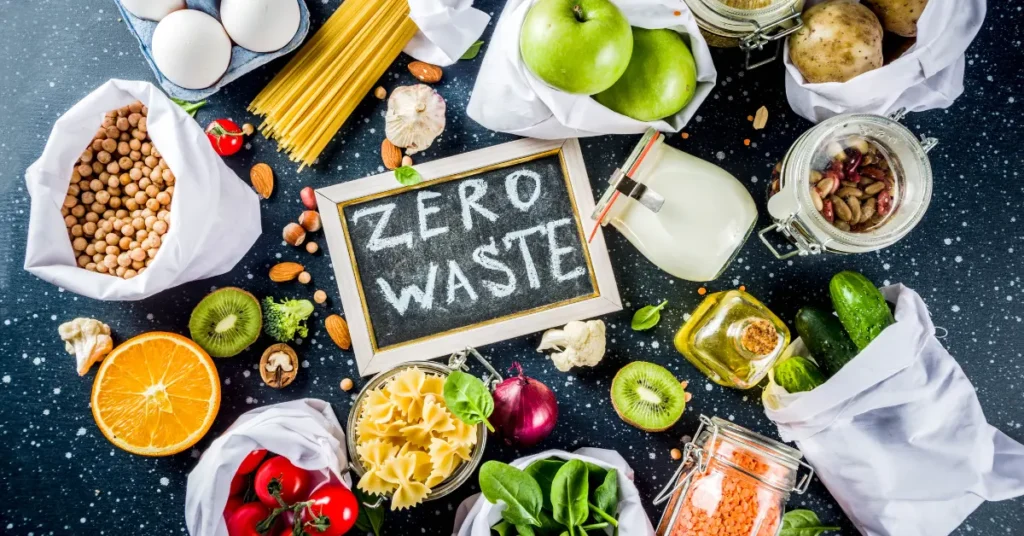
In terms of economics From a financial perspective, peels of fruit can be an economical way to improve health. Instead of buying supplements or extra veggies and fruits, using the entire produce increases the value of nutrition and reduces consumption. This strategy can cut costs as well as assure that you are getting maximum value from your budget for groceries. Also, including peels in your daily diet will cut down on the consumption of packaged snacks and other supplements which can lead to savings as well as encouraging better eating habits.
Supporting Sustainable Agriculture
Consuming the peels can also benefit sustain agricultural methods. Utilizing the whole of the fruit or vegetable and reducing the need for high-volume production as well as reduce the environmental burden caused by food waste. This is a way to create a more ecologically sustainable food system. The practice of sustainable agriculture not just helps the environment, but it also assists to assure that there will be a long-term supply of nutritious foods for future generations. If we make a conscious effort to cut down on the amount of food wasted and to support environmentally sustainable practices, we will make a difference to a cleaner earth and more durable food system.
Cultural Perspectives on Eating Peels
Traditional Practices
The consumption of peels isn’t an entirely new idea and has been element of the traditional diet in diverse cultures throughout the centuries. In Indian dishes the vegetable peels like bottle gourd, ridge gourd, and gourd are commonly utilized to create chutneys as well as stir-fries. Similar to this to Chinese medical practices, the peels of orange are utilized to prepare herbal teas and other remedies because of their benefits for health. Traditional practices like these highlight the long-standing acceptance of the medicinal and nutritional qualities of orange peels. The practice of embracing these traditions may add useful insights on how to integrate peels in our contemporary eating habits.
Modern Trends
Since the past few years there’s seen a revival in desire for traditional sustainable food practices, which includes eating peels. This trend is in sync with a growing concern about food waste as well as the need for diets that are nutrient dense. Platforms like wellhealthorganic.com:eat your peels: unlocking the nutritional benefits play a crucial role in educating the public and promoting these practices. A growing interest in plants-based diets, and the increased emphasis on eating whole foods has also led to a rise in demand for eating peels since people are seeking to enhance the nutrition benefit of their meals.
Culinary Innovation
Culinary enthusiasts and chefs have also begun to embrace the idea of eating peeled peels. New recipes and techniques for cooking are being created in order to make peels more delicious and pleasurable. From rinds of watermelon that have been picked or candied orange peels foodies are discovering inventive ways to incorporate peels in gourmet meals. This innovative culinary technique does more than enhance the taste and aesthetics of meals, but also highlights the variety and nutrition benefits of peels. Through exploring different methods of with peels for cooking, we are able to find delicious and healthy ways to include them in our daily diet.
Practical Tips to including Peels into your diet
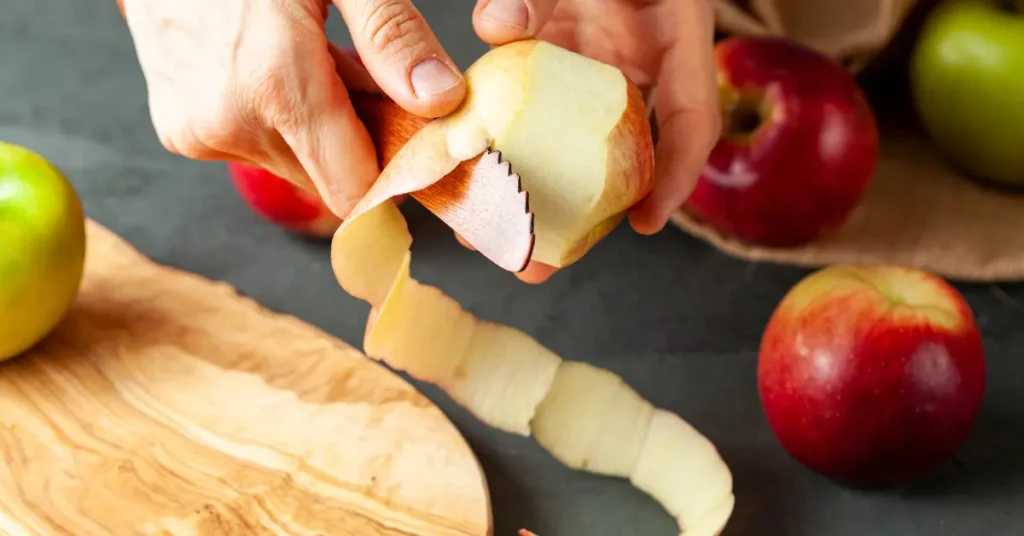
Start Small
If you’re new to peels and their benefits, you should start by eating a little. Start by adding peels to smoothies, or baking them into chips. Gradually rise the quantity and type of fruits and vegetables you consume to see how your body adjusts. Beginning small will allow the digestive system to adapt to the rise in fiber intake as well as benefit you spot any possible sensitivities or allergies. In time, you’ll be able to test different kinds of peels, and come up with innovative ways to include them in the meals you eat.
Experiment with Recipes
Explore different recipes to determine what recipe works perfect for your preferences. If it’s adding lemon zest in your salads, or mixing fruit peels into smoothies, there are plenty of ways to reap the health advantages of peels. Making new dishes can help make the process of adding the peels in your diet more enjoyable and pleasurable. Take inspiration from a variety of culinary styles and cuisines to find new and innovative ways to incorporate peels into your cooking.
Be Mindful of Texture and Taste
Certain peels may be hard or bitter, which may not please everyone. Mixing and cooking peels could benefit increase the texture and flavor. As an example boiling the peels of citrus can lower their bitterness, which makes it more pleasant to consume. Furthermore, marinating or spicing peels may enhance the flavor and help make them more enjoyable. Paying attention to the texture and flavor will ensure that you are able to enjoy the health benefits of eating peels, without degrading the overall experience of eating.
Use Organic Produce
When possible, select organic food items to lessen the possibility of consuming pesticide residues. If organic food isn’t accessible, warrant you wash the peels completely before eating the fruit. Organic produce will deliver an added sense of security as well as assure that you’re getting maximum nutritional benefits from your peels without having any danger of toxic chemical substances. Making the decision to buy organic food can help sustain sustainability in farming practices as well as help to create a more sustainable living environment.
Fapello A Health and Wellness Platform
Fapello, a health and wellness platform, offers numerous benefits for overall health. It provides personalized fitness plans and nutritional guidance, helping individuals achieve their health goals effectively. With features like virtual consultations with health experts and access to a wide range of wellness resources, Fapello supports both physical and mental well-being. Additionally, its community forums foster social support and motivation, enhancing adherence to healthy lifestyle changes. Through its comprehensive approach, Fapello empowers users to take charge of their health and maintain a balanced, healthy life.
Conclusion: wellhealthorganic.com:eat your peels: unlocking the nutritional benefits
The concept highlighted by wellhealthorganic.com:eat your peels: unlocking the nutritional benefits is not just a trend but a scientifically backed approach to enhancing our diet. Peels are a treasure trove of vital nutrients, antioxidants and fiber, which are typically higher in concentration than the flesh of the fruits and vegetables. When we incorporate peels into our diets they can provide important health benefits, decrease consumption, and benefit to create an environmentally sustainable and cost-effective lifestyle. If you’re reaching to grab a slice of fruit or an ingredient keep in mind that the skin may be just the excellent portion.
The inclusion of peels in your food regimen can result in better health and sustainability in the world. Take advantage of this easy but powerful alteration and uncover the nutrients in the skins of your favourite fruits and veggies. When you are conscious to use the full of a fruit or vegetable to improve the quality of your food, promote sustainable development, and decrease the amount of food wasted. Your journey towards better well-being and a cleaner earth begins with a simple but significant step eating the peels.
FAQ About wellhealthorganic.com:eat your peels: unlocking the nutritional benefits
Why should I eat vegetable peels as well as fruits?
Peels are an excellent source of fiber, vitamins as well as antioxidants and vitamins. They have numerous advantages for health, and they tend to be higher in content than flesh. vegetable.
Are there any health hazards associated to the consumption of the peeles?
Peels that aren’t organic might contain residues of pesticides. Furthermore, certain peels could be bitter or hard. It is important to cleanse the fruit thoroughly and begin with small amounts so that you can gauge your body’s reactions.
What peels of fruit and vegetables are considered healthy?
Citrus fruits like potato, apples or carrot the peels of mango and kiwi are extremely healthy and can be incorporated into various meals for a healthier lifestyle.
How can I incorporate peeled fruits in my diet?
Peels are a great ingredient to add into smoothies, or cooked into chips. Peels can also be used as a garnish or in stews and soups. Try different recipes to find the excellent recipe to meet your requirements.
What are the benefits for the environment from eating fruits that have been peeled?
A variety of different peels helps reduce the amount of food waste, aids in maintaining the process of sustainable agriculture as well as encourages efficiency of the use of natural resources. This leads to a healthier and sustainable lifestyle.
Are there any customs in the society that require the consumption of peeles?
Certain civilizations have added peels to their diets, for instance, using citrus peels together as Chinese medicinal herbs and with the peels of vegetable for Indian stir-fries and chutneys as well as other meals.
What precautions are I required to be aware of when taking peeles to eat?
Pick organic products for a lower exposure to pesticides. Also, wash your skin with care and keep a watch for any digestion intolerances or allergic reactions. Beginning with less food intake can help the body adjust.

